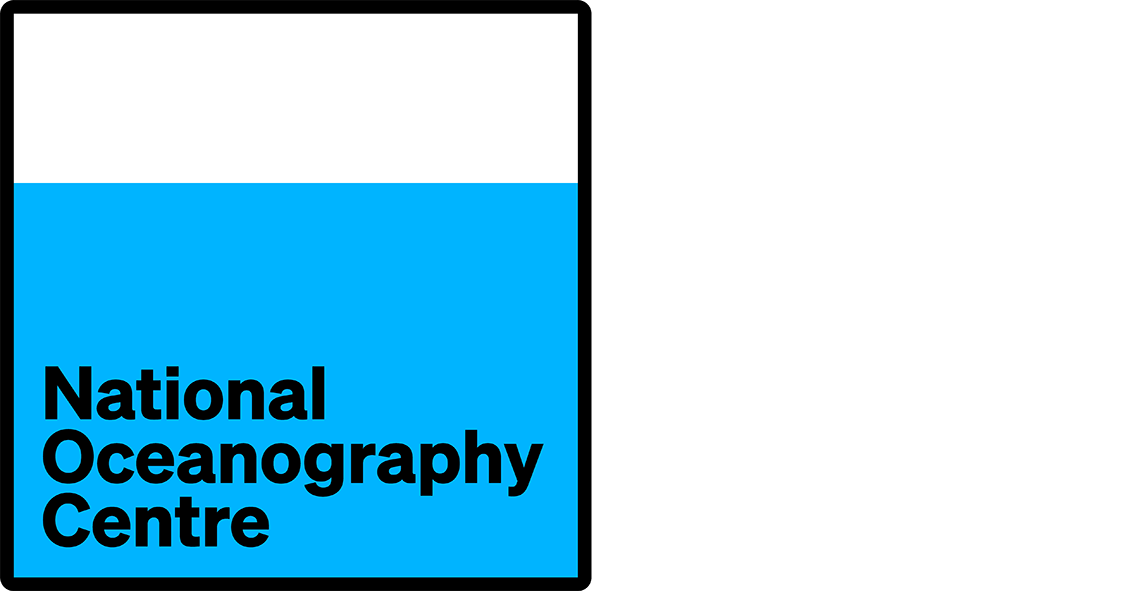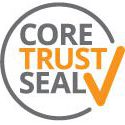Metadata Report for BODC Series Reference Number 1014496
Metadata Summary
Problem Reports
Data Access Policy
Narrative Documents
Project Information
Data Activity or Cruise Information
Fixed Station Information
BODC Quality Flags
SeaDataNet Quality Flags
Metadata Summary
Data Description |
|||||||||||||||||||||||||||||||||||||||||||||||||
|
|||||||||||||||||||||||||||||||||||||||||||||||||
Data Identifiers |
|||||||||||||||||||||||||||||||||||||||||||||||||
|
|||||||||||||||||||||||||||||||||||||||||||||||||
Time Co-ordinates(UT) |
|||||||||||||||||||||||||||||||||||||||||||||||||
|
|||||||||||||||||||||||||||||||||||||||||||||||||
Spatial Co-ordinates | |||||||||||||||||||||||||||||||||||||||||||||||||
|
|||||||||||||||||||||||||||||||||||||||||||||||||
Parameters |
|||||||||||||||||||||||||||||||||||||||||||||||||
|
|||||||||||||||||||||||||||||||||||||||||||||||||
|
|||||||||||||||||||||||||||||||||||||||||||||||||
Problem Reports
No Problem Report Found in the Database
Data Access Policy
SIMORC data access conditions
The data collated and held at BODC on behalf of the SIMORC project are restricted. However, the data will be available to download from the Official SIMORC Website, as part of the project protocol. The data set will initially include data from the oil companies TOTAL, Shell and BP.
Narrative Documents
Datawell Directional Waverider Buoy
General
The Datawell Datawell Directional Waverider is a 90cm diameter spherical buoy which measures wave height, period and direction. The directional measurement is based on a translational principle so that horizontal motions rather than wave slopes are measured. Consequently the measurement is independent of buoy roll motions and a relatively small spherical buoy may be used. A single point vertical mooring ensures adequate symmetrical horizontal buoy response to resolve small motions at low frequencies. Two 15m lengths of rubber cord are normally included in the mooring. Data are transmitted to a shore based station and/or an Argos satellite.
Sensors
- Heave-pitch-roll sensor Hippy40
- Three axis fluxgate compass
- Two fixed "x" and "y" accelerometers
- Temperature sensor
Principles of Measurement
The Directional Waverider measures vertical accelerations by means of an accelerometer placed on a gravity stabilised platform. This platform is formed by a disk which is suspended in the fluid within a plastic sphere placed in the bottom of the buoy. Two vertical coils are wound around the plastic sphere and one small horizontal coil is placed on the platform. The pitch and roll angles are defined by the amount of coupling between the fixed coils and the coil on the platform. This coupling is measured. The result of the measurement gives the sine of the angles between the coil axes (x and y axes) and the horizontal plane (=platform plane). The fluxgate compass measures the components of the Earth's magnetic field in the direction of the x, y and z axes. All of these measurements define the buoy's position with respect to fixed (north, south and vertical) coordinates.
A transformation matrix of the relation between vector components in buoy coordinates and fixed coordinates is formed. The acceleration of the buoy is measured in the x and y directions (two fixed accelerometers) and in the vertical direction (accelerometer mounted on a stabilised platform).
With the help of the transformation matrix and these measured accelerations, the accelerations in the north-south and east-west directions can be calculated. All the analogue outouts of the sensors are filtered using a low-pass filter with a cut-off frequency of 1.5Hz. At this frequency, the buoy's motions are already strongly attenuated due to the small wavelengths compared to the buoy's dimensions (geometric attenuation).
The filter outputs are sampled at a rate of 3.84Hz. As transformation calculations are performed at this rate by the on-board processor, the three accelerations are available at the same rate. By means of further digital processing, the acceleration data are filtered (low-pass 10th order filter with a cut-off at 0.6Hz) and double integrated to give three translation signals in the frequency range 0.033Hz - 0.6Hz (3dB) (0.05Hz - 0.55Hz 0.31dB). These translation signals are transmitted over the radio link in real time.
A complete spectrum is calculated every half hour. Parameters are calculated at each of 64 frequency points (0.025Hz - 0.100HZ at 0.005Hz intervals and 0.110Hz to 0.580Hz at 0.010Hz intervals). The parameters calculated at each frequecny point are: mean direction, angle of spread, second harmonics of angular energy distribution check factor and relative power density.
Reference
Datawell bv, Zomerlustraat 4, 2012 LM Haarlem, the Netherlands (1995). Operation and Service Manual for "Directional Waverider" from serial no. 30109 and including 30076, 30101, 30106, 30108.
Waverider Wave Measuring Buoy
A waverider buoy measures waves by floating on the surface of the sea and measuring its own vertical motion in response to passing waves. The buoy contains an accelerometer which is stabilised in the vertical plane for storm and swell wave frequencies by means of a short length of chain attached to the bottom of the buoy. A length of rubber cord links this chain to the rest of the mooring.
In general a waverider buoy will contour the sea surface and generate a heave signal to an accuracy of better than five percent. This signal is used to amplitude modulate a 27-30 MHz radio signal which is transmitted continuously; this signal can be received by the recording device at a range of up to 50 km depending on local conditions.
For more information on waverider buoys see Driver (1980) (from which the above text has been taken).
References
Driver, J.S. (1980).
A guide to sea wave recording. Institute of Oceanographic Sciences, Report No. 103, pp 91 (16 figs).
BODC Processing
Data were received by BODC in an Excel spreadsheet. This was converted to a CSV file and then reformatted to QXF format using BODC transfer function 383. The following table shows how the variables within the files were mapped to the appropriate BODC parameter codes:
| Original parameter name | Original Units | Description | BODC Parameter Code | BODC Units | Comments |
|---|---|---|---|---|---|
| Time (assumed GMT) | DD-MON-YY hh:mm:ss | Date and time (GMT) | AADYAA01 + AAFDZZ01 | Day number and day fraction | Conversion by transfer |
| Hs | cm | Significant wave height | GTDHCA01 | m | /100 |
| Have | cm | Average wave height | GAVGVA01 | m | /100 |
| Hmax | cm | Maximum wave height | GCMXLCA01 | m | /100 |
| Tz | seconds | Zero upcrossing period | GTZAVA01 | seconds | |
| Tp | seconds | Peak period | GTPKVA01 | seconds | |
| TCrest | seconds | Crest period | GTCACA01 | seconds | |
| DirPeak | degrees True | Wave direction at spectral peak | GDPXVA01 | degrees True | |
| SeaTemp | degrees C | Water temperature | TEMPPR01 | degrees C |
The maximum and average wave heights were measured at half hourly intervals, exactly on the half hour. All the other parameters were measured 5 minutes earlier, but have been given a nominal time the same as that for the maximum and average heights to simplify the data. A battery voltage was also given in the source data file, but was not transferred as this remained constant throughout the deployment at 7 volts.
Following transfer to QXF, the data were screened using BODC's in-house visualisation software, EDSERPLO.
General Data Screening carried out by BODC
BODC screen both the series header qualifying information and the parameter values in the data cycles themselves.
Header information is inspected for:
- Irregularities such as unfeasible values
- Inconsistencies between related information, for example:
- Times for instrument deployment and for start/end of data series
- Length of record and the number of data cycles/cycle interval
- Parameters expected and the parameters actually present in the data cycles
- Originator's comments on meter/mooring performance and data quality
Documents are written by BODC highlighting irregularities which cannot be resolved.
Data cycles are inspected using time or depth series plots of all parameters. Currents are additionally inspected using vector scatter plots and time series plots of North and East velocity components. These presentations undergo intrinsic and extrinsic screening to detect infeasible values within the data cycles themselves and inconsistencies as seen when comparing characteristics of adjacent data sets displaced with respect to depth, position or time. Values suspected of being of non-oceanographic origin may be tagged with the BODC flag denoting suspect value; the data values will not be altered.
The following types of irregularity, each relying on visual detection in the plot, are amongst those which may be flagged as suspect:
- Spurious data at the start or end of the record.
- Obvious spikes occurring in periods free from meteorological disturbance.
- A sequence of constant values in consecutive data cycles.
If a large percentage of the data is affected by irregularities then a Problem Report will be written rather than flagging the individual suspect values. Problem Reports are also used to highlight irregularities seen in the graphical data presentations.
Inconsistencies between the characteristics of the data set and those of its neighbours are sought and, where necessary, documented. This covers inconsistencies such as the following:
- Maximum and minimum values of parameters (spikes excluded).
- The occurrence of meteorological events.
This intrinsic and extrinsic screening of the parameter values seeks to confirm the qualifying information and the source laboratory's comments on the series. In screening and collating information, every care is taken to ensure that errors of BODC making are not introduced.
Project Information
System of Industry Metocean data for the Offshore and Research Communities (SIMORC)
The EU-funded SIMORC project is a collaborative effort between MARIS (Netherlands), BODC (UK), the International Association of Oil and Gas Producers (OGP) and IOC-IODE to provide a harmonised and quality controlled metocean data set from data collected by oil and gas producers, accessible through the SIMORC protocol.
Data Activity or Cruise Information
Data Activity
| Start Date (yyyy-mm-dd) | 2009-06-19 |
| End Date (yyyy-mm-dd) | 2009-07-14 |
| Organization Undertaking Activity | Total S.A. |
| Country of Organization | France |
| Originator's Data Activity Identifier | MohoWave |
| Platform Category | moored surface buoy |
SIMORC Directional Waverider Buoy Deployment Congo Moho
The position of the waverider buoy was 5.04011° S; 11.4428° E in a water depth of 597 metres.
The Datawell directional waverider buoy serial number 30656 was deployed on behalf of TOTAL at Congo Moho on 15th June 2009. After one month, realtime communication with the waverider buoy was lost and it was confirmed to have separated from its mooring. It had probably been trawled. The waverider buoy was subsequently recovered and found to be in good working order and the recorded data were successfully downloaded.
Cruise
| Cruise Name | 2009 |
| Departure Date | 2009-06-12 |
| Arrival Date | Unknown |
| Principal Scientist(s) | Guislain BĂ©cu (GEMS Survey Ltd) |
| Ship | MV Polar Prince |
Complete Cruise Metadata Report is available here
Fixed Station Information
Fixed Station Information
| Station Name | Moho, Congo |
| Category | Offshore location |
| Latitude | 5° 16.80' S |
| Longitude | 11° 22.80' E |
| Water depth below MSL | 865.0 m |
SIMORC: TOTAL Congo Moho Fixed Station Document
This site consists of a Floating Production Unit (FPU), located in the Moho field, offshore Congo. Various deployments were taken from or near this site:
- A Vaisala Maritime Automated Weather Station (MAWS) recorded wind and meteorological data from 28th May 2008 to 31st March 2009.
- A Datawell Waverider buoy was deployed from 19th June 2009 to 14th July 2009.
- Two RDI instruments ADCPs and an Aanderaa RCM7 current meter were deployed from 16th June 2009 to 26th November 2009.
The nominal position of the site is 5.28° S; 11.38° E with an assumed water depth (taken from GEBCO) of 865 metres.
Related Fixed Station activities are detailed in Appendix 1
BODC Quality Control Flags
The following single character qualifying flags may be associated with one or more individual parameters with a data cycle:
| Flag | Description |
|---|---|
| Blank | Unqualified |
| < | Below detection limit |
| > | In excess of quoted value |
| A | Taxonomic flag for affinis (aff.) |
| B | Beginning of CTD Down/Up Cast |
| C | Taxonomic flag for confer (cf.) |
| D | Thermometric depth |
| E | End of CTD Down/Up Cast |
| G | Non-taxonomic biological characteristic uncertainty |
| H | Extrapolated value |
| I | Taxonomic flag for single species (sp.) |
| K | Improbable value - unknown quality control source |
| L | Improbable value - originator's quality control |
| M | Improbable value - BODC quality control |
| N | Null value |
| O | Improbable value - user quality control |
| P | Trace/calm |
| Q | Indeterminate |
| R | Replacement value |
| S | Estimated value |
| T | Interpolated value |
| U | Uncalibrated |
| W | Control value |
| X | Excessive difference |
SeaDataNet Quality Control Flags
The following single character qualifying flags may be associated with one or more individual parameters with a data cycle:
| Flag | Description |
|---|---|
| 0 | no quality control |
| 1 | good value |
| 2 | probably good value |
| 3 | probably bad value |
| 4 | bad value |
| 5 | changed value |
| 6 | value below detection |
| 7 | value in excess |
| 8 | interpolated value |
| 9 | missing value |
| A | value phenomenon uncertain |
| B | nominal value |
| Q | value below limit of quantification |
Appendix 1: Moho, Congo
Related series for this Fixed Station are presented in the table below. Further information can be found by following the appropriate links.
If you are interested in these series, please be aware we offer a multiple file download service. Should your credentials be insufficient for automatic download, the service also offers a referral to our Enquiries Officer who may be able to negotiate access.
| Series Identifier | Data Category | Start date/time | Start position | Cruise |
|---|---|---|---|---|
| 964235 | Meteorology -unspecified | 2008-05-28 19:50:00 | 5.28 S, 11.38 E | Not applicable |
| 964211 | Winds -statistics | 2008-05-28 19:50:00 | 5.28 S, 11.38 E | Not applicable |


